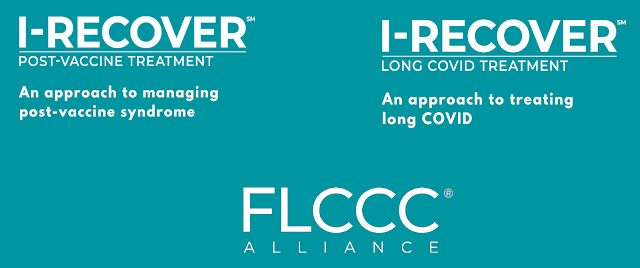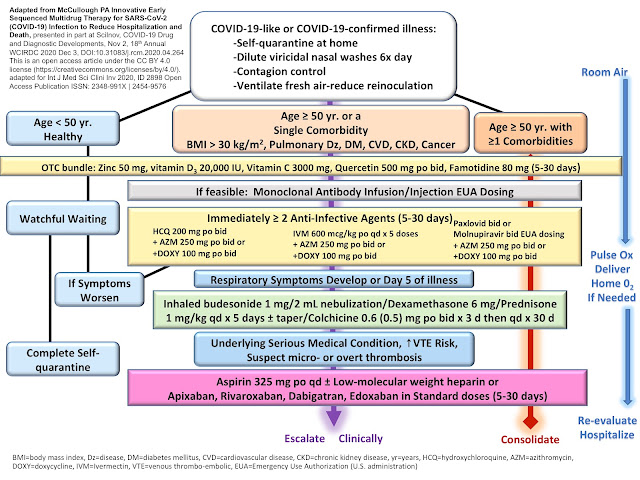Evidence-Based Analysis of Integrative Medicine Approaches to Spike Protein Injury (2025)
Mechanisms of Spike Protein Pathology
The SARS-CoV-2 spike protein, particularly the receptor-binding domain (RBD) of the S1 subunit, is the most prominent aspect of the viral capsid and mediates cell entry by binding to Angiotensin Converting Enzyme II (ACE2) (PMC). This binding can trigger cascading pathological effects throughout multiple body systems.Spike proteins can be packaged in exosomes, potentially resulting in inflammation and immune activation in organs and tissues distant from the infection or injection site2. These extracellular vesicles can cross the blood-brain barrier, and the spike protein itself may directly impact blood-brain barrier permeability2. Research indicates the spike protein exhibits pathogenic characteristics in cardiovascular, hematological, neurological, respiratory, gastrointestinal, and immunological systems4.
Studies have found that both viral and vaccine-encoded spike proteins can play a direct role in cardiovascular and thrombotic injuries4. Notably, detection of spike protein for at least 6-15 months after vaccination and infection in individuals with persistent symptoms suggests it may be a primary contributing factor to long COVID and post-vaccination syndromes4.
Four Key Pathways for Intervention
Evidence suggests four fundamental approaches to addressing spike protein-related conditions:
Inhibiting spike protein cleavage and binding (preventing ongoing damage)
Clearing the spike protein from the body (eliminating damaging agents)
Healing damage caused by spike protein (restoring homeostasis)
Establishing a healthy microbiome (supporting recovery)2
Spike Protein Neutralization and Clearance Strategies
Enzyme-Based Protocols: Nattokinase, Bromelain, and Curcumin
The most evidence-supported intervention from the available research is a base spike detoxification protocol consisting of oral nattokinase, bromelain, and curcumin4. This approach is described as having "immense promise as a base of clinical care" for aiding in the resolution of post-acute sequelae after SARS-CoV-2 infection and COVID-19 vaccination4.
Nattokinase may help dissolve fibrin microclots that form in response to spike protein exposure while potentially contributing to spike protein degradation. Bromelain, a proteolytic enzyme, may assist in breaking down spike proteins. Curcumin provides complementary anti-inflammatory benefits. While this combination shows promise, large-scale, prospective, randomized, double-blind, placebo-controlled trials are still warranted to determine optimal dosing, duration, and patient selection4.
Clearing Mechanisms: Autophagy Induction
Research indicates that "clearing of spike proteins can also be accomplished by increasing autophagy, which clears proteins and recycles their amino acids"2. Autophagy is the body's natural cellular cleanup process that removes damaged components and recycles materials. This suggests that interventions that enhance autophagy might be beneficial for spike protein clearance, though specific protocols require further research.
Botanical Compounds: Examining Pine Needle Tea and Fisetin
Popular claims regarding pine needle tea for COVID-19 prevention and spike protein neutralization warrant careful examination. While pine needle tea has historical medicinal uses spanning centuries across multiple cultures, claims that "shikimic acid in white pine needles prevents the shedding of the spike protein in people vaccinated for COVID-19" are not supported by scientific evidence5. Furthermore, there is no evidence that "vaccinated people shed" spike protein, and research has not established that "shikimic acid on its own does anything beneficial" against spike proteins5.
In contrast, Fisetin 8-C-glucoside shows more promising scientific support. Research utilizing computational analysis found that Fisetin demonstrated superior binding energy compared to Nafamostat (a known inhibitor) when interacting with TMPRSS2, which serves as a gateway for SARS-CoV-2 entry into host cells6. Molecular docking studies revealed that "Fisetin forms H bond with Val 25, His 41, Lys 42, Lys 45, Glu 44, Ser186" and demonstrated stable profiles during simulation6. This suggests potential value in preventing spike protein-cell interaction, though clinical studies are needed to confirm these computational findings.
Natural Products as Potential Spike Protein Inhibitors
Recent research has focused on identifying natural products with potential inhibitory effects on SARS-CoV-2 spike protein entry into host cells3. Using advanced computational methods and databases including the Protein Data Bank Japan and BindingDB, researchers isolated 204 S-glycoprotein sequences and identified 33,722 potential binding molecules, comparing them with 52,107 secondary metabolites from the KNApSAcK database3.
Through docking analysis and drug-likeness property assessment, fourteen secondary metabolites were identified as promising candidates for inhibiting the three major types of spike proteins3. These natural compounds were selected based on binding energy, adherence to Lipinski's rule, favorable psychochemical properties, and good bioavailability scores3. This computational research provides a foundation for further experimental validation of natural compounds as potential therapeutic agents against SARS-CoV-2 spike proteins.
Anti-Inflammatory and Vascular Repair Strategies
Given that one significant mechanism of harm from spike proteins is vascular damage2, interventions targeting endothelial repair and vascular integrity are logical approaches. Similarly, since spike proteins can trigger inflammation and immune activation in multiple organ systems24, anti-inflammatory interventions may provide symptomatic relief and potentially limit tissue damage.
While many anti-inflammatory compounds (curcumin, quercetin, resveratrol) and vascular support agents (NAC, L-arginine) are commonly included in integrative protocols, the current research emphasizes the importance of targeting the source—the spike protein itself—rather than only managing downstream symptoms.
Microbiome Considerations in Spike Protein Detoxification
Establishing a healthy microbiome is identified as a key component of recovery from spike protein-related conditions2. This suggests that gut health interventions may play an important supporting role in comprehensive treatment protocols, though specific probiotic strains or prebiotic approaches for spike protein detoxification require further research.
Personalization of Treatment Approaches
The diversity of presentations and severity among individuals experiencing long COVID-19 and vaccine injury necessitates personalized treatment approaches2. Factors such as pre-existing conditions, genetic variations, age, and specific symptom patterns may influence optimal protocol design. This personalization should be guided by clinical assessment and relevant biomarkers where available.
Potential Biomarkers for Assessment and Monitoring
While specific biomarker panels for spike protein injury are still being developed, research suggests that indicators of cardiovascular and thrombotic injury may be relevant for assessment and monitoring4. The detection of persistent spike protein in patients with ongoing symptoms offers a potential biomarker target, though standardized clinical testing for this is still emerging4.
Future Research Directions
Current evidence supports the concept of spike protein detoxification protocols, particularly the nattokinase-bromelain-curcumin combination4. However, substantial research gaps remain regarding optimal dosing, treatment duration, patient selection criteria, and combination therapies.
The computational identification of fourteen promising natural compounds as potential spike protein inhibitors provides an exciting foundation for further experimental validation3. These compounds should be prioritized for in vitro and eventually clinical studies to determine their efficacy in addressing spike protein-related conditions.
Conclusion
The emerging understanding of spike protein pathology has created both challenges and opportunities in clinical care. The available evidence supports a multi-faceted approach focusing on inhibiting spike protein binding, clearing spike proteins from the body, repairing resultant damage, and supporting overall health through microbiome optimization2.
While the nattokinase-bromelain-curcumin protocol currently has the strongest supporting evidence as a base intervention4, computational research is identifying additional natural compounds with promising potential36. As research continues to evolve, integrative medicine approaches that combine evidence-based interventions with personalized assessment and monitoring offer the most comprehensive framework for addressing spike protein injury.
The complexity of spike protein-related conditions requires continued research investment and clinical innovation. As one study concludes, large-scale randomized controlled trials are warranted to fully determine the relative risks and benefits of spike detoxification protocols4, highlighting both the promise of these approaches and the need for rigorous scientific validation.





.png)


Comments
Post a Comment